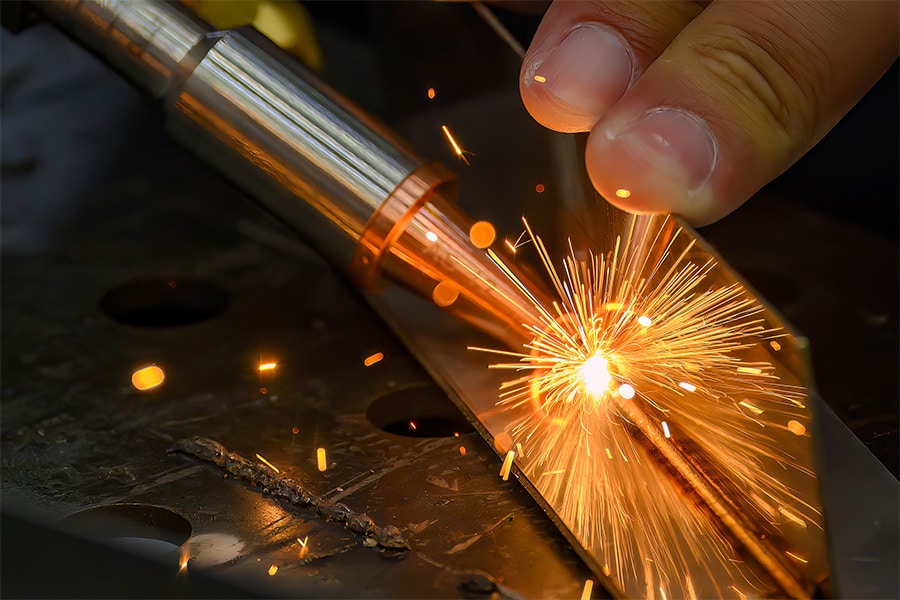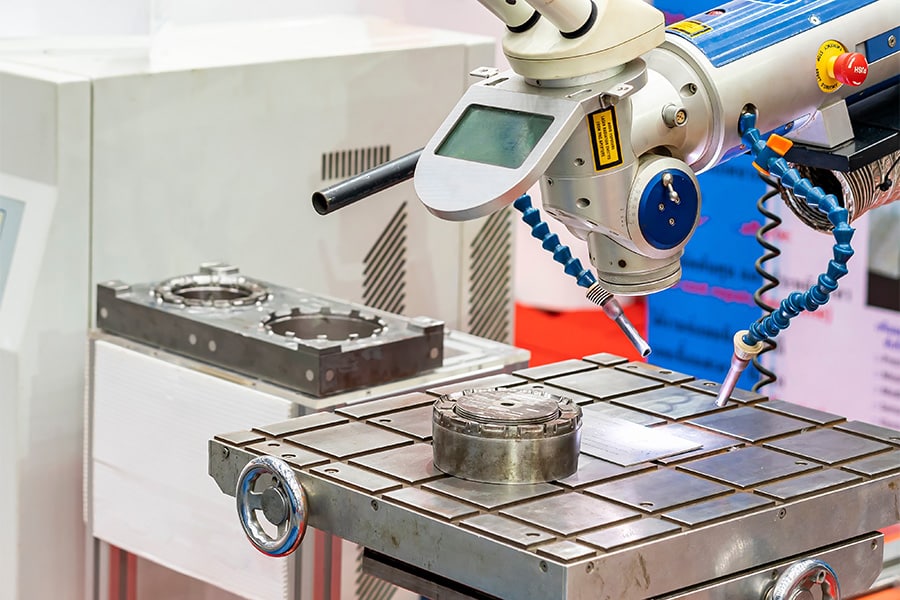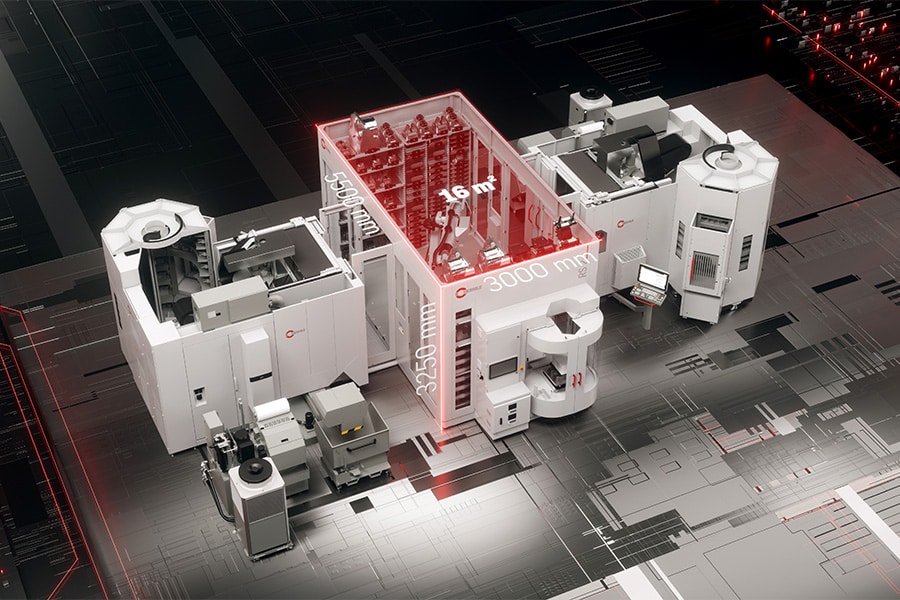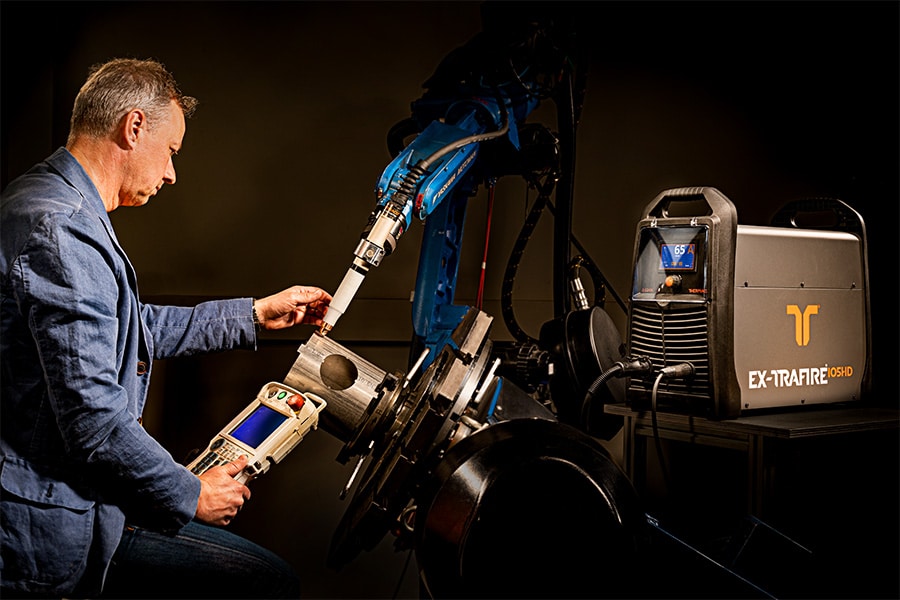
The era of manual laser welding has arrived
For years, traditional welding techniques such as MIG or TIG predominated in industry. But they are running into their limits due to the scarcity of technically skilled personnel in general and welders in particular. Metalworkers are therefore looking for new ways to join materials that require less experience to ensure beautiful quality and that work quickly and efficiently. Laser welding seems to tick off all those requirements, provided we pay enough attention to safety.
TIG welding is a time-consuming, two-handed welding method that requires an experienced, highly skilled operator. It generates extreme heat that deforms thin materials, has difficulty welding copper and is limited when welding metals of various thicknesses. MIG welding requires a filler wire, pre-cleaning of the material and chamfered joints to establish solid welds in thick materials. Displacement and working angles are limited, and vertical positions can be challenging. There is also a new challenge: enabling new welders to be productive without sacrificing quality. That's why more and more manufacturers are switching to newer welding methods, such as hand laser welding, which can increase welding speeds up to four times faster than MIG and TIG welding, to improve productivity and precision.

What are the benefits of laser welding?
Lasers have been around since the 1960s. Laser welding applications have also been around for a while. But the evolution that has made it possible to do so manually goes back to the fiber laser source. These laser sources are completely solid state and require no complex optical elements. The simplicity of the fiber laser provides efficiency, compactness, robustness and low cost, which drive success in industrial applications. Compared to older laser systems, fiber technology offers higher output power and a quality beam at a lower cost with minimal maintenance. And those benefits are now available for laser welding as well. The quality and intensity of fiber laser light precisely controls the heat input of the material, allowing thin materials to be welded. Lasers are not limited to steel; they can also weld aluminum and copper. Even dissimilar joints are within reach. Laser welding can also be automated for increased productivity and high efficiency. The high accuracy allows small parts to be joined with low heat input and minimal distortion. Finally, compared to tradi-tional manual MIG and TIG welding, laser welding is usually faster, improving production output and increasing profits.

How does laser welding by hand work?
Simply put, the density of the laser power melts the metal, eliminating the need for an arc. The high power density results in a smaller, more controlled weld pool. Precise control of laser parameters reduces heat distortion effects.
Do you have to be a welding or a laser expert to work with a handheld laser?
Not at all. Handheld laser systems usually come with presets for common material types and thicknesses. With simple controls, you can select the right preset by choosing the material type and thickness from a table and setting the control to the specified settings. The technology is nothing like traditional welding processes. For example, you do not have to stand hunched over the workpiece. Thus, no welding experience is required. However, training is recommended to master all the finer points of laser welding. But even with minimal training, one achieves higher welding quality with higher speed.

The welds look great, but are they strong?
Manual laser welding produces superior aesthetics, but is it too good to be true? To answer this question, several pieces were tested. Testing according to ASTM standard methodology revealed no cracks, incomplete fusion, porosity, inclusions or other defects anywhere in the samples. In other words, the weld profiles passed all tests and no underfilling was detected.
What can you do with a handheld laser?
Don't stare blindly at the capabilities of the various devices on the market. It's ultimately about how deep they can penetrate the material. Depending on the system, handheld laser welding is available in configurations that allow welds up to 12 millimeters of penetration depth. The limit used to be closer to 4 millimeters, but as with fiber laser cutting, developments are moving fast to expand the playing field of handheld laser welding. In addition, some system configurations can also be used for part cleaning. This can be useful in workpiece preparation to remove residual oil or dirt from the workpiece. The cleaning capabilities of a handheld laser can also be used to prevent corrosion and passivate the material after welding.
What are some safety guidelines?
Although a handheld laser is easy to use and has built-in safety features, it is important to remember that it is a powerful industrial device. When using a handheld laser, remember that the beams are dangerous to the body and eyes. A laser beam is invisible, so you cannot rely on visual cues to ensure safety. Although these systems are Class IV lasers, there are safety features integrated to protect you. The most important maxim to take away: always wear safety glasses. In addition, make sure laser welding is shielded, such as in a separate booth, as the beam can be reflected and is invisible. And impress upon all employees the dangers of the laser beam so they know the importance of wearing the proper protective equipment.
Is laser welding something for you?
Manual laser welding allows for fast welding, is easy to learn and operate, and offers consistent high-quality results for a wider range of materials and thicknesses with minimal distortion or burn-through. If you want to reduce your costs, improve weld quality and simplify the welding process, manual laser welding is an excellent alternative.



